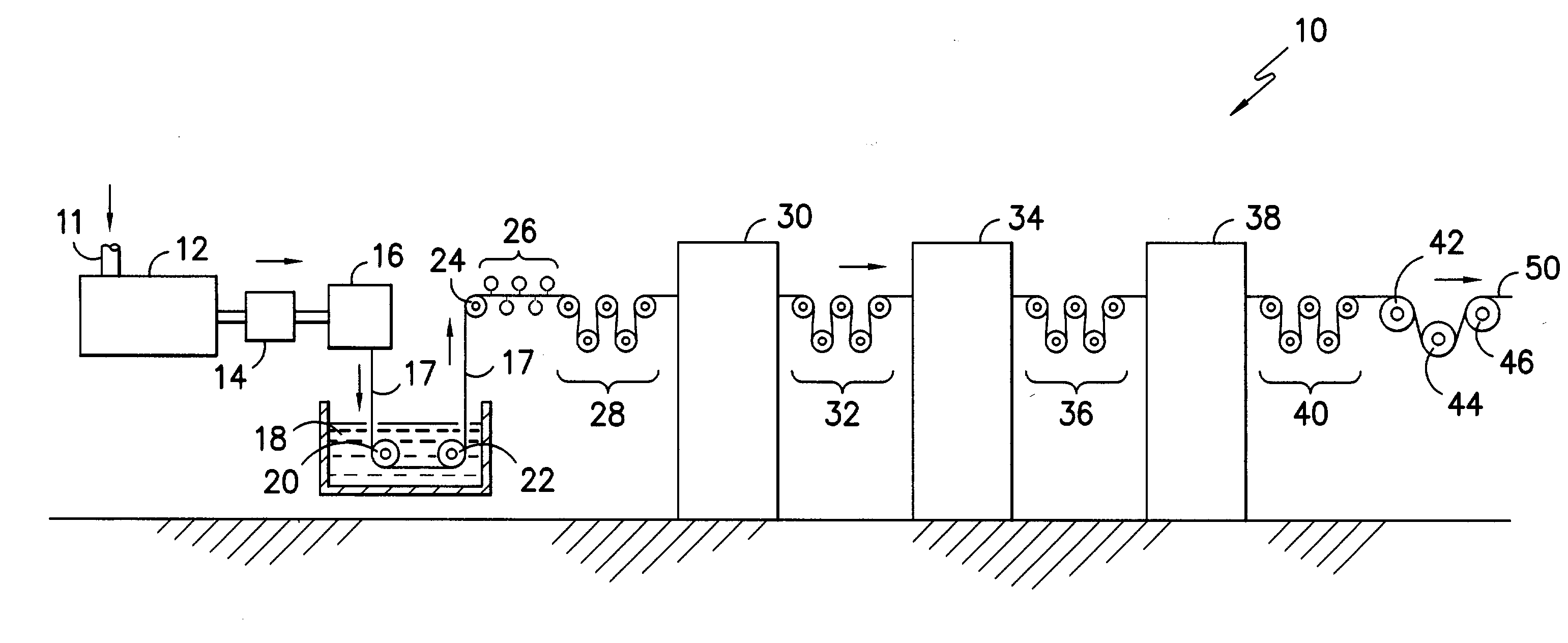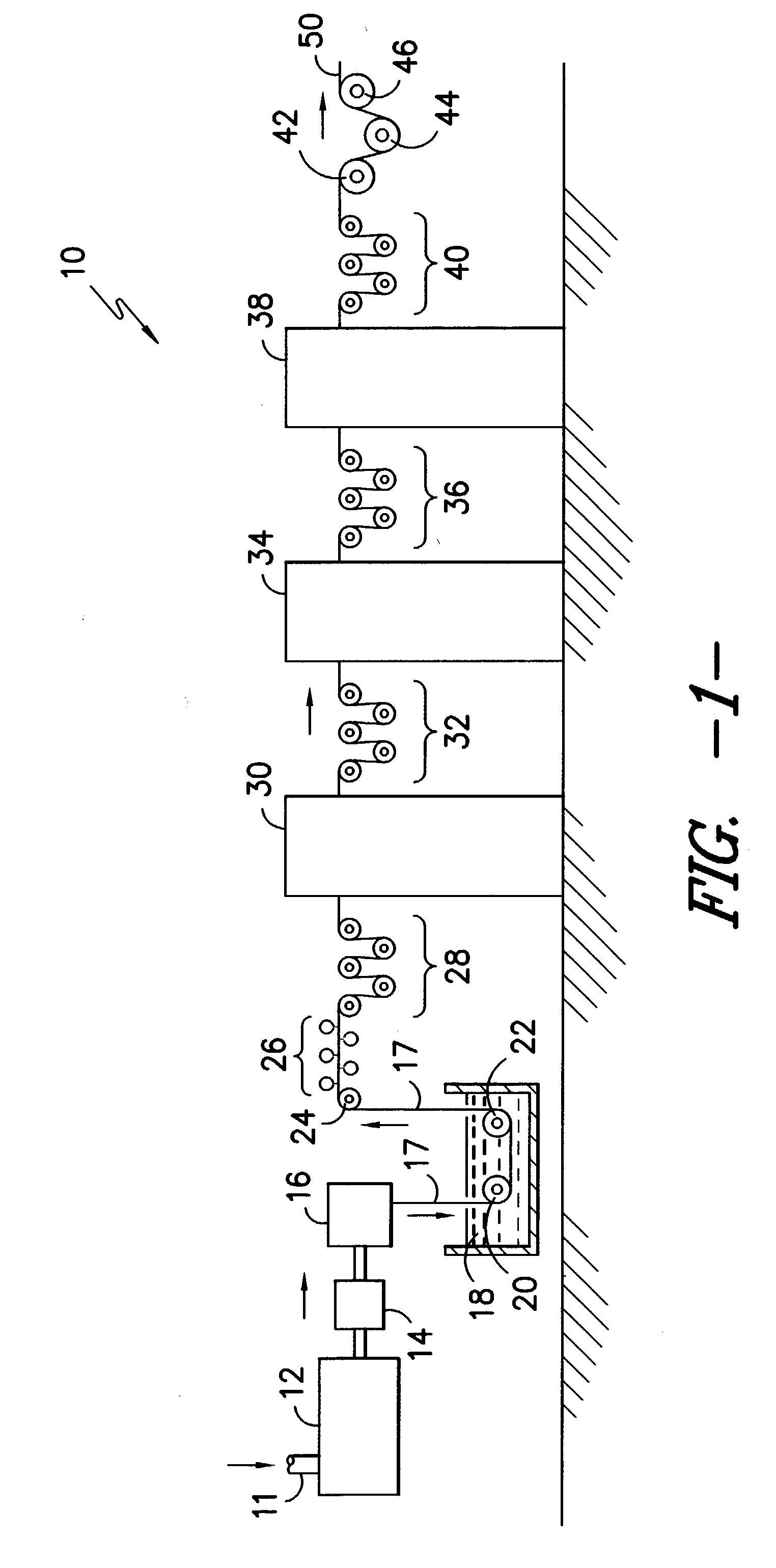Polypropylene monofilament fibers exhibiting low-shrink, high tenacity, and extremely high modulus levels
a polypropylene monofilament fiber and high tenacity technology, applied in the field of thermoplastic fibers, can solve the problems of high shrinkage rate, residual shrinkage effect of the article itself, and high undesirable warping or rippling of the final carpet product, and achieve low shrinkage, low shrinkage properties, and high tenacity and modulus strength characteristics
- Summary
- Abstract
- Description
- Claims
- Application Information
AI Technical Summary
Benefits of technology
Problems solved by technology
Method used
Image
Examples
Embodiment Construction
[0009] It is thus an object of the invention to provide improved shrink rates while also increasing tensile strengths for thermoplastic fibers. A further object of the invention is to provide a class of additives that, in a range of concentrations, will provide low shrinkage and / or higher tensile strength levels for such inventive fibers (and yams made therefrom). Another object of the invention is to provide a specific method for the production of nucleator-containing polypropylene fibers permitting the ultimate production of such low-shrink, high tensile strength, fabrics therewith.
[0010] Accordingly, this invention encompasses a monofilament thermoplastic fiber comprising at least one nucleator compound, wherein said fiber exhibits a shrinkage rate of at most 5% at 150.degree. C. and a 3% secant modulus of at least 35 gf / denier, and optionally a tenacity measurement of at least 2.75 gf / denier. Also encompassed within this invention is a polypropylene monofilament fiber meeting th...
PUM
| Property | Measurement | Unit |
|---|---|---|
| Fraction | aaaaa | aaaaa |
| Fraction | aaaaa | aaaaa |
| Angle | aaaaa | aaaaa |
Abstract
Description
Claims
Application Information
 Login to View More
Login to View More - R&D
- Intellectual Property
- Life Sciences
- Materials
- Tech Scout
- Unparalleled Data Quality
- Higher Quality Content
- 60% Fewer Hallucinations
Browse by: Latest US Patents, China's latest patents, Technical Efficacy Thesaurus, Application Domain, Technology Topic, Popular Technical Reports.
© 2025 PatSnap. All rights reserved.Legal|Privacy policy|Modern Slavery Act Transparency Statement|Sitemap|About US| Contact US: help@patsnap.com


